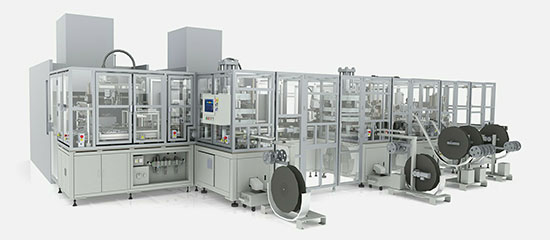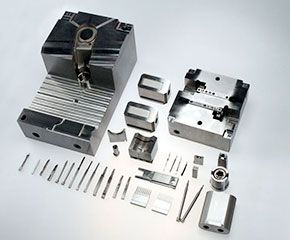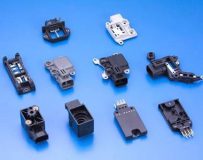Insert molding is an injection molding method where steel or other non-plastic components are positioned into a mold, and plastic is injected spherically to form one stable piece. This technique combines one-of-a-kind materials in a single product, growing durable objects without using adhesives or screws. It’s an efficient technique to make merchandise stronger, lighter, and much less likely to go back aside.
Let’s explore how metal insert molding works, essential thoughts to consider, and where it’s typically used.

Custom insert molding process
Insert molding starts by placing the non-plastic object, or “insert,” into the mold. Depending on the last product’s requirements, inserts can be steel, ceramic, or other beautiful materials. Once the insert is in the vicinity, molten plastic is injected into the mold, surrounding and forming around it. The plastic cools and hardens, shielding the insert tightly in the area.
Here’s a clean step with the valuable resource of-step breakdown of the manner:
- Preparing the Insert: The insert, which includes a metallic piece, is easily wiped to cast off dirt, oils, or debris. This permits the plastic to bond more strongly.
- Placing the Insert within the Mold: The insert is positioned in the gold’s hollow area and designed to be maintained securely in the vicinity throughout the injection. Molds are often made with specific functions to maintain the insert every day.
- Injecting the Plastic: Molten plastic is injected into the mold all through the insert, filling the regions spherically and taking over the mold’s form.
- Cooling and Solidifying: The plastic cools down and hardens across the insert, locking it within the region.
- Removing the Final Product: The finished part is eliminated from the mold, and now a single solid piece with the insert is firmly embedded.
The result is a strong product crafted from a combination of materials, each contributing unique features like electricity, durability, or flexibility.
Critical Considerations in Insert Molding
When using overmolding with inserts, numerous elements want to be considered to achieve a successful result. Let’s study most of the most essential ones:
Choice of Materials: Selecting the proper substances is critical. The insert and plastic need to bond nicely to create a long-lasting product. Metals like brass and stainless steel are famous alternatives for inserts, while plastics like ABS or nylon work nicely for molding. Choosing substances that bond well can prevent the product from breaking or keeping apart.
Mold Design: The mold is vital to the insert molding procedure. The insert must be kept securely while allowing plastic to flow around it. Good mold design ensures that the insert doesn’t shift during the injection technique, which could cause the final product to be misaligned or choppy.
Temperature Control: Temperature plays a significant function in plastic and metal bonding. The plastic should be at the proper temperature to float evenly and bond with the insert, but it shouldn’t be so hot that it damages the insert material. Proper cooling time is likewise crucial because the plastic could crack or shrink if it cools too quickly.
Insert Placement: It is vital to ensure the insert is located efficiently. Some molds are designed with small grooves or slots to keep the insert in place. If the insert moves at some point in the molding procedure, the very last product will be less robust or may also be unusable.
Cost Considerations: Insert molding may be cost-effective because it combines substances in a single step, reducing the need for additional components and assembly steps. However, the preliminary price of making a custom mold may be excessive, so insert molding is regularly great for larger production runs in which the value may be spread across many gadgets.
Applications of Insert Molding
Insert molding applications are extensively used in many industries as they produce solid products. Some standard programs consist of:
Electronics: Insert molding is frequently used to make objects like cellphone chargers, connectors, and digital parts. The metal portions of internal electronic products can be surrounded by plastic, making them secure, insulated, and clean to handle.
Medical Devices: Many clinical devices, including syringes, have metal inserts surrounded by plastic, making them longer-lasting and less complicated to grip. Durable molded components help ensure these gadgets are robust and meet strict first-class standards.
Automotive Parts: In cars, insert molding makes durable components that require energy and insulation. For instance, gears or handles may have metallic inserts with plastic coverings for comfort and durability.
Household Items: Everyday merchandise like handles on tools or kitchen utensils are made with insert molding to offer a comfortable grip. The metallic insert makes the tool robust, while the plastic round makes it easy to hold.

The Site You Should Visit for the Best Insert Injection Molding
The best website to visit is Ex Mould Co., Ltd for the lovely in-insert injection molding. They focus on superb hybrid molding techniques, combining professional craftsmanship with modern technology. This website stands out because Ex Mould Co., Ltd. Provides dependable services that supply sturdy, long-lasting components across many industries. Ex Mold Co., Ltd can meet your needs whether you want precision molding for electronics, automotive components, or scientific devices.
Their group uses superior techniques to ensure each product is perfectly molded around inserts, developing high-energy, long-lasting pieces. Plus, they may be recognized for their commitment to client satisfaction and best.
FAQs
What substances are utilized in insert molding?
Insert molding uses both plastic and non-plastic substances. Metals like brass or stainless steel are common insert substances, while plastics like ABS or nylon are popular mold materials.
Is insert molding durable?
Yes, insert molding may be very long-lasting. Combining metallic with plastic makes products more potent, more resistant to put on, and less likely to interrupt.
Can insert molding be used for small products?
Absolutely. Insert molding is often used for small gadgets like electronic connectors or medical devices, providing a strong bond and fantastic durability.
Final Thoughts
Insert molding effectively combines particular substances into one vital piece. By embedding a steel or other non-plastic insert into a plastic shell, insert molding creates robust and flexible products. This system is used in many industries to make everyday gadgets, from electronics to automotive elements. With the proper materials, mold design, and temperature management, insert molding can efficiently produce dependable and long-lasting products.

